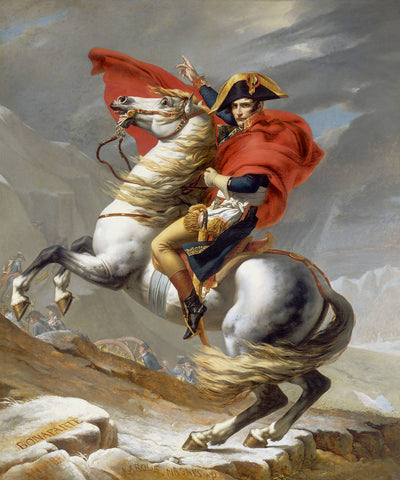Jacques-Louis David (French: 30 August 1748 – 29 December 1825) was a French painter in the Neoclassical style, considered to be the preeminent painter of the era. In the 1780s his cerebral brand of history painting marked a change in taste away from Rococo frivolity toward classical austerity and severity and heightened feeling, harmonizing with the moral climate of the final years of the Ancien Régime.
David later became an active supporter of the French Revolution and friend of Maximilien Robespierre (1758–1794), and was effectively a dictator of the arts under the French Republic. Imprisoned after Robespierre's fall from power, he aligned himself with yet another political regime upon his release: that of Napoleon, The First Consul of France. At this time he developed his Empire style, notable for its use of warm Venetian colours. After Napoleon's fall from Imperial power and the Bourbon revival, David exiled himself to Brussels, then in the United Kingdom of the Netherlands, where he remained until his death. David had a large number of pupils, making him the strongest influence in French art of the early 19th century, especially academic Salon painting.
After Napoleon's successful coup d'état in 1799, as First Consul he commissioned David to commemorate his daring crossing of the Alps. The crossing of the St. Bernard Pass had allowed the French to surprise the Austrian army and win victory at the Battle of Marengo on 14 June 1800. Although Napoleon had crossed the Alps on a mule, he requested that he be portrayed "calm upon a fiery steed". David complied with Napoleon Crossing the Saint-Bernard. After the proclamation of the Empire in 1804, David became the official court painter of the regime.




